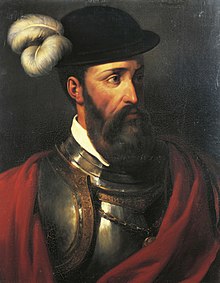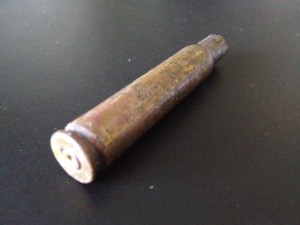by Bob Sparrow
I hadn’t realized that it has been almost four years that I’ve left you hanging since the last episode of ‘The Tape’. For those new to the blog or those who may need a little refresher, here is where, in our ‘Archives’ (the column to the right) you can find the first five chapters.
Chapter 1 – Jan 6, 2014; Chap. 2 – Jan 20, 2014; Chap. 3 – May 5, 2014; Chap. 4 – July 14, 2014; Chap. 5 – March 30, 2015.
OR you can just email me or ask in the comment section below for the Word document with the first 5 chapters on it.
Chapter 6
As daylight slipped away, the Chief slowly got to his feet and started making his way back to the Jeep. I followed. We rode in silence back down the mountain as the lights from the Jeep bounced and searched the darkness for the unmarked road home. When we reached the café where we had begun our journey this morning, the Chief stopped in front, but before he motioned me to get out, he said, “By the time Meeka’s work was done there, she was sought after by the authorities as well as several vigilante groups. After narrowly escaping with her life on several occasions, she decided to leave the desert and headed toward the coast. The story goes that she found a ship out of San Diego headed for South American and signed on as a cook. She wanted to get to Peru as she had read many stories about the Spanish Conquistadors and their oppression of the Incas; it reminded her of what had happened here.” The Chief open the glove box, “There is an author and historian who can probably fill in a lot of blanks about Meeca’s experiences in South America.” He fumbled around a bit and finally pulled out a small business card and handed it to me. I could barely read the name in the dark; ‘Dr. Bud Easton’ and it had a telephone number with a Los Angeles area code underneath the name that was all that was on the card.
“Who is he?”, I asked. The Chief looked into the night sky for a moment and slowly shook his head and said, “I don’t know the whole story, in fact, I don’t know much of it at all, but I know that Meeka was an amazing woman, she was a crusader who was driven to try and right the wrongs of the world, even if she was hundreds, if not thousands, of years too late.” Doctor Easton is a fountain of knowledge on Meeka’s exploits in South America.”
“I’ll definitely look him up, thank you Chief for an amazing day.” He nodded solemnly, I shut the car door and he drove off. I got into my car and started my ninety-minute drive home.
Don: Ninety minutes home and you’ve got my 90 minute tape in your pocket . . . coincidence?”
“I don’t believe in coincidences,” I said as I pulled ‘The Tape’ out of my jacket pocket and clicked it into the cassette player anxious to listen more carefully than I ever had before in hopes that, for whatever reason, it might make more sense to me now. I thought about meeting Dr. Easton, who miraculously was supposedly a fountain of knowledge about someone I’d never heard of until today.
The next day I drove to Dr. Easton’s house in a nice area of L.A.
Don: Is there a nice area of L.A.?
Yes, we’re in one. A long tree-lined driveway lead back to a beautiful home surrounded by a good deal of vegetation – very nice, and expensive I’m sure. I guess he’s sold a lot of books.
I parked and nervously rang the doorbell. Dr. Bud Easton opened the door almost immediately. He was a short stocky man with close eyes, a balding head and an easy smile. I had called him the night before and asked for a meeting, which he immediately agreed to and gave me directions to his home.
“You must be Bob, come on in” he said in a welcoming tone.
“I am, thank you so much for meeting with me.” I entered his beautiful home and he directed me to his library off the entry. It was like the ones you see in the movies, high ceilings, filled with dark oak paneled book shelves all the way to the top and filled with more books than I could imagine one person owning.
He went to a file drawer and pulled out a large folder filled with manuscripts and photos and I don’t know what else, and said, “So you told me you had an interest in learning more about Meeka and her exploits in South America.”
I said “Yes, but it astounds me that there is even any material about her at all. Wasn’t she just a poor Indian woman who had this crazy idea of avenging the deaths of some of her forefathers? How were her exploits even known about?”
Dr. Easton open the binder and said, “Before we had scribes and history books, events were preserved through oral history, passed down from generation to generation. I’ve made a life’s work out of collecting oral history and getting it down on paper; that’s how I came across Meeka’s story. It had a lot of different version, as you might suspect, accounts of oral history can change depending on who’s telling it.
Don: Isn’t that just like written history which is written by the winners?
“You mentioned that you have a tape of some rather obscure language that you’re trying to translate is that correct.”
Yes
“Do you have the tape with you?”
“Yes, I said as I set it on the desk in front of him. It’s 90 minute in total, I don’t know if you want to listen to it all right now.”
“Well, let’s start it and see how far we get.
I clicked the tape in the cassette player he had on his desk and we sat and listened until we got a little past half way through the first side.
“OK, that’s good.” he said and I shut it off
He continued, “About half way through this first side the language changed a bit which coincided with her move from the deserts in Southern California to South America.
With eyes wide open I said, “You mean you know what is being said on this tape?”
Don: Does this mean we’re actually getting someplace?
Dr. Easton continued, “Yes, for the most part. The first half of side one is spoken in Inviatim, a language thought to originate from the Aztecs, and it tells of the story that it sounds like the Chief took you to in the Santa Rosa mountains. Then half way through it switches to dialects more associated with the Inca, which would follow Meeka’s travels from the deserts in Southern California to the west coast of South American.”
What I heard in the second half of this first side is the story of how Meeka researched this history of the Spanish invasion of the new world, specifically Francisco Pizarro, who was a Spanish conquistador, who some revere as the person who brought Christianity to the people in the new world and reviled by others who saw him as lying, murdering, intruder who eradicated nearly 90% of the Inca people.
Wow, how did he do that? How could he do that?
Actually it wasn’t that hard.
To be continued . . . sooner than 4 years!









